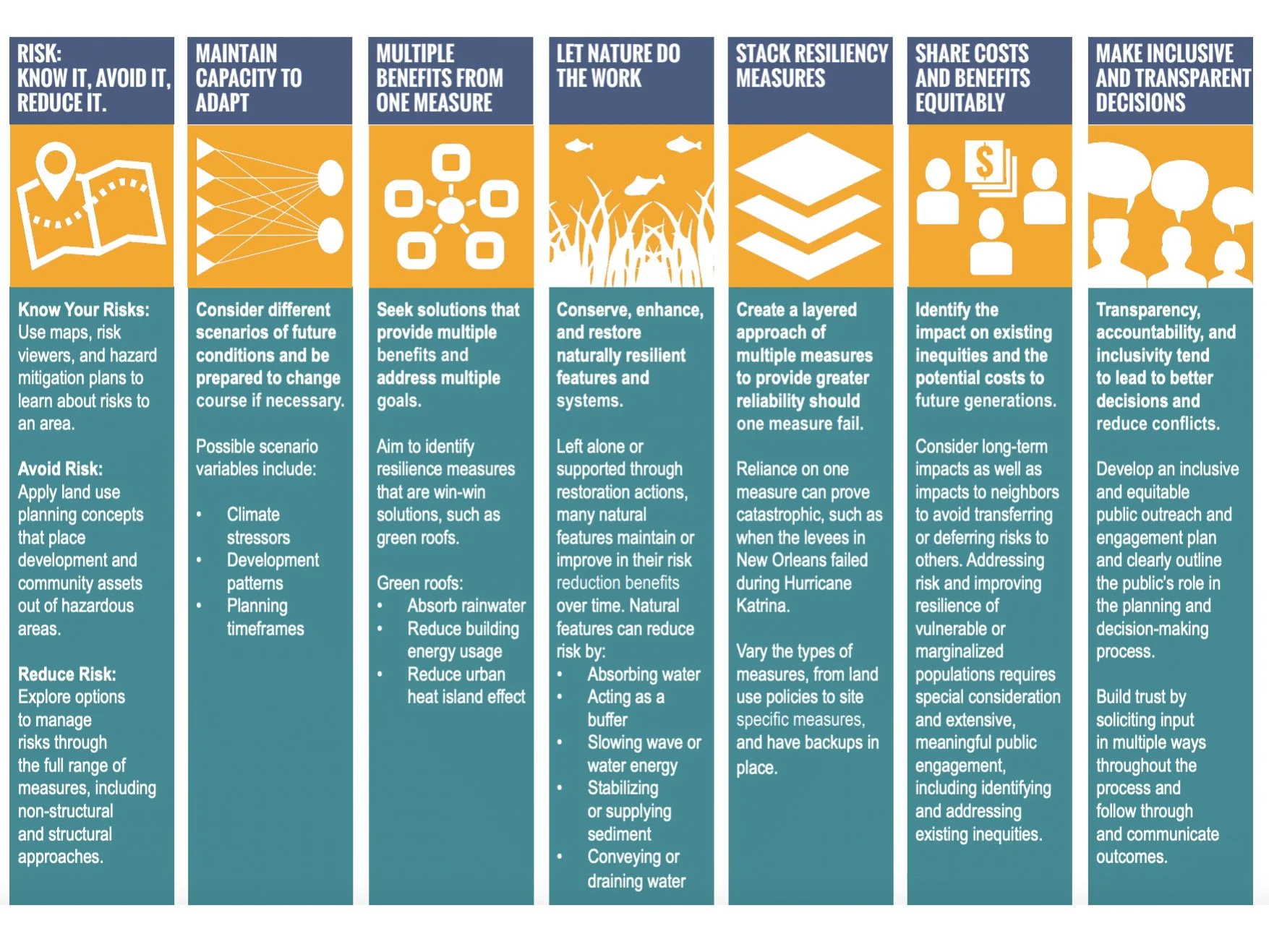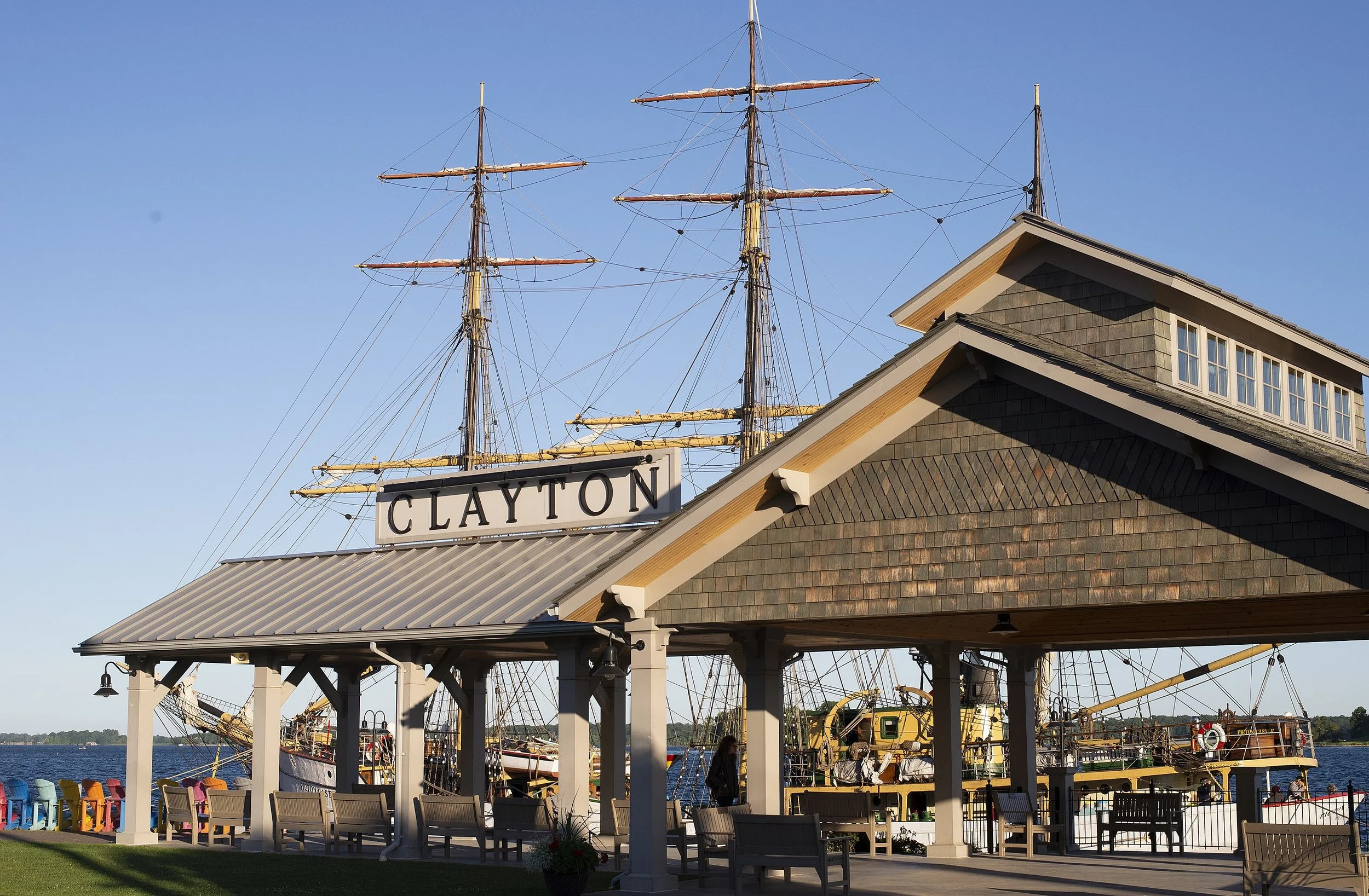Mar 3 • Written By Raine WuBuilding Resilient Communities: The Role of OPDCI’s Resiliency Planning in Promoting Socio-Economic Development and Environmental Protection
Resilience refers to the ability of communities and their ecosystems to withstand extreme events and other risks and continuously adapt to rapidly changing environmental conditions and forces. Good resilience allows communities to quickly restore the structure and function of their social, economic, and ecological systems after a disaster. However, sea level rise, water level changes, and strong storms due to climate change increase the vulnerability of communities to flood and storm surge risks. The Office of Planning, Development, and Community Infrastructure employs resilience principles, using tools developed to visualize and assess risk, help waterfront communities understand their vulnerability, and advance resilience measures to reduce risk.
To manage natural hazards and climate change risks, OPDCI used resilience planning as their approach. The first step in the process is to assess existing coastal hazards in coastal areas, identify important community assets, such as homes, bridges, and other infrastructure, and identify assets at risk. This helps communities manage future risks and avoid the most severe impacts. Next, proactive and adaptive planning must be undertaken to reduce adverse effects, promote community improvements, and prevent future development and infrastructure costs that may not be available. This step also involves determining the amount or type of risk acceptable to the community.
Implementing risk reduction measures includes non-structural, soft structure, and structural techniques—preferred non-structural criteria, such as land use considerations. Shoreline treatment measures are used based on site characteristics. The selection of a strategy or project depends on a variety of factors and often uses a combination of measures. An adaptive implementation approach offers flexibility by allowing for adjustments in community goals, information that is accessible, and risk characteristics. The implementation of resiliency planning can help communities increase their resilience to meet future threats and challenges.
Department of State: resilience principles for New York communities
The Clayton Village and Town Local Waterfront Revitalization Program (LWRP) is an excellent example of OPDCI’s resiliency planning, which is critical to promoting socio-economic development, protecting the environment, and increasing the use of public waters. By restoring, revitalizing, and protecting the local waterfront ecosystem, the project has made Clayton “the gateway to the Thousand Islands region”, attracting a large number of visitors and investors.
The project has taken several steps to achieve this goal. Since 1996, the project has been awarded 10 LWRP grants totaling over $2.7 million to improve public use facilities in the watershed and for economic recovery, among other things. At the same time, the program has begun to focus on local resiliency and resilience with measures that include working with the state on the Resiliency and Economic Development Initiative (REDI) program to strengthen flood resilience and economic development in local watersheds.
The Clayton harbor in Frink Park (with the Picton Castle tall ship in the background) - 2019
Through the support of the LWRP, Clayton Village and Town has completed several essential watershed public facilities and economic recovery projects, including the installation of a breakwater and short-term docking facility at Memorial Park, the construction of the Thousand Islands Regional Dock, the Frink America Parcel, a site assessment and restoration feasibility analysis, and professional land use planning, among others. These projects have not only improved public access to the watershed but have also contributed to local economic development. In addition, Clayton Village and Town participates in the Coastal Lakeshore Economy and Resiliency (CLEAR) program, which supports local communities in developing comprehensive, adaptive strategies and plans to enhance long-term conservation measures and existing investments. These initiatives improve the quality of Clayton’s ecosystem and provide sustainable development opportunities for the local community.
Department of State. (n.d.). Resilience Principles. Retrieved May 3, 2023, from https://dos.ny.gov/system/files/documents/2021/08/resilienceprinciples_opd.pdf
Local Waterfront Revitalization Program. Department of State. (n.d.). Retrieved May 3, 2023, from https://dos.ny.gov/local-waterfront-revitalization-program
Resilience planning. Department of State. (n.d.). Retrieved May 3, 2023, from https://dos.ny.gov/resilience-planning
Smerdis. (2019). The Clayton harbor in Frink Park (with the Picton Castle tall ship in the background). photograph.
US Department of Commerce, N. O. and A. A. (2009, August 27). What is resilience? NOAA's National Ocean Service. Retrieved May 3, 2023, from https://oceanservice.noaa.gov/facts/resilience.html
Village and town of Clayton Local Waterfront Revitalization. Department of State. (n.d.). Retrieved May 3, 2023, from https://dos.ny.gov/village-and-town-clayton-local-waterfront-revitalization


